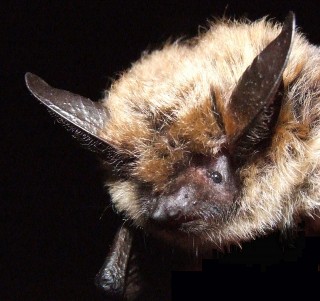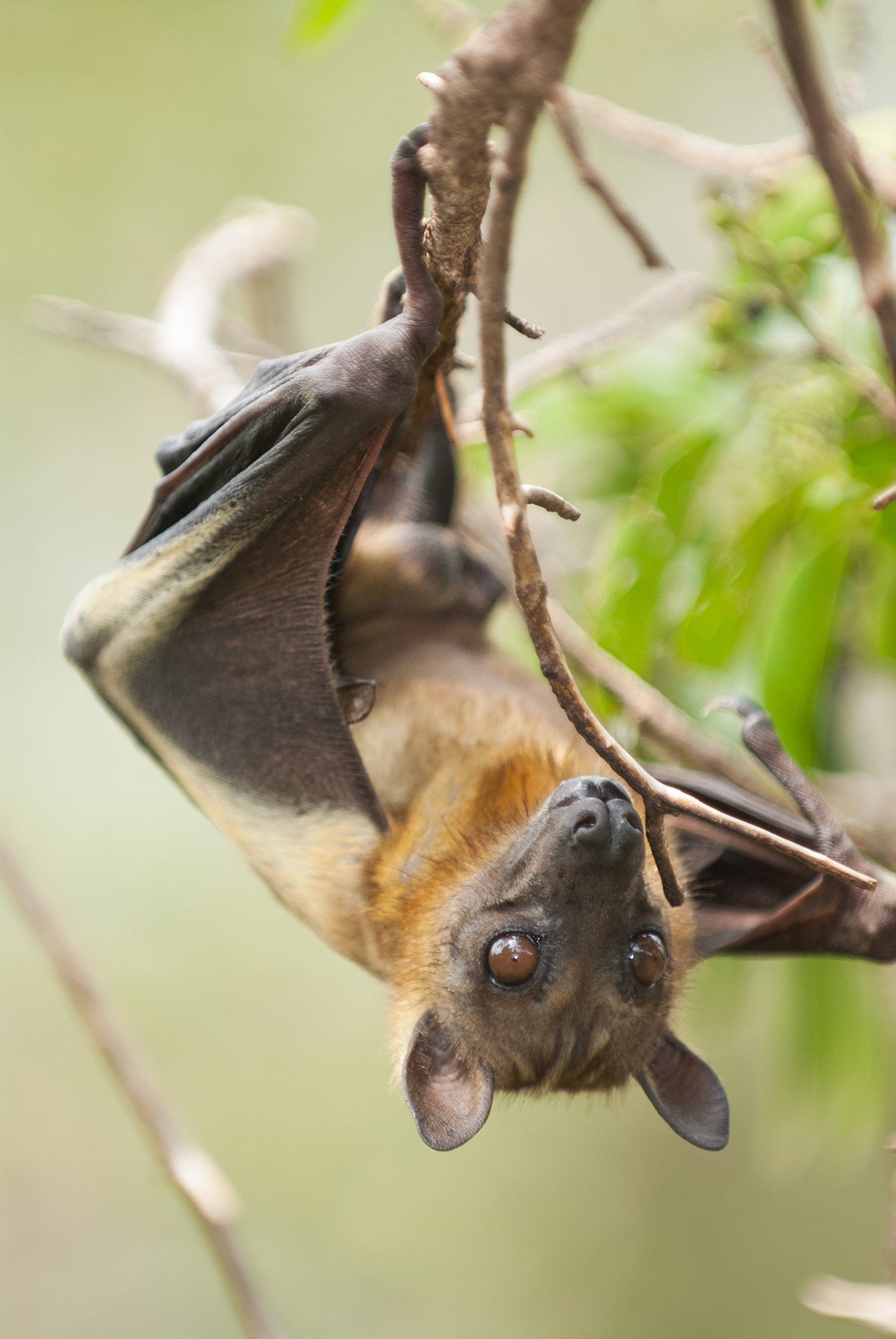
January 12, 2018
Island Bats
- as seen by -
 Ricardo Antunes
Ricardo Antunes
Lake Kivu sits on the border between Rwanda and the Democratic Republic of Congo. Near its eastern shore lies Napoleon Island, so named for its shape like the French emperor’s bicorne hat.
I traveled to this small island to see and photograph a colony of straw-colored fruit bats (Eidolon helvum) that live there. As the boat approached Napoleon’s shores, hundreds of dark-winged creatures leapt off every branch into the air producing a cacophony of loud screeches. The commotion didn’t last long, and I managed to quietly photograph a few bats as they returned to their resting places.
Straw-colored fruit bats are the most widespread of the African frugivore (fruit-eating) bats. They feed on a range of sweet and juicy fruits, flowers, buds, and young leaves. From sunrise to sunset, these bats travel to feed on the best food patches, and then spend the day resting in large colonies of animals like this one that I visited on Napoleon Island. These bats can travel thousands of miles in annual migration across central Africa tracking the seasonal pulses of fruit production.
Environmental degradation caused by farming, forestry, and mining is increasing and impacting these animals throughout their range. Because of their size, these large bats are also a preferential source of bushmeat in certain locations, although in other places they are traditionally protected. Because of their wide range, their conservation and management requires coordination among several countries. Unfortunately, insufficient research and monitoring and the absence of a conservation strategy constitutes a danger for the future of these and other bat species in Africa.
Nikon




Leave a Comment